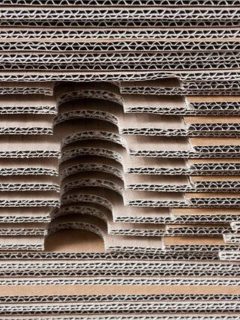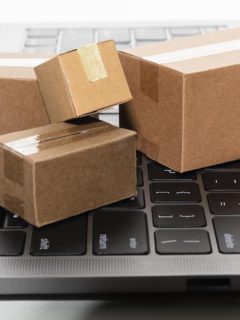Moving house is one of those challenges that can be a real nightmare. Packing fragile items such as glassware and china, which are prone to damage during transport, can be particularly stressful. So how do you pack your glassware and crockery so that it arrives safely at your new home? Find out how to do it efficiently and without undue stress!
How to pack glassware for a move? Useful accessories
Before you start packing your glassware, make sure you have everything you need. The right materials are the key to success.
You’ll find a list of useful accessories for packing glassware below. It will make your task easier, so it’s well worth taking a close look at it.
- Cardboard boxes – choose a variety of sizes to fit all items. Cardboard boxes with compartments, designed just for packing crockery, will be ideal.
- Bubble wrap – will protect fragile items from shocks. Choose a film of the right thickness to provide the best cushioning.
- Stretch film – will keep items from moving around in the box and protect them from moisture.
- Wrapping paper or newspapers – can be used as void fillers to prevent items from moving around inside the parcel.
- Adhesive tape – choose wide packing tape to secure boxes well.
- Markers and labels – these will come in handy to label the contents of the boxes so they are easier to unpack later.
Packing your removal plates step by step
Have you got all your materials ready? Then you can move on to packing your plates. Where do you start to make the process hassle-free?
- Wrapping the plates –wrap each plate with packing paper or bubble wrap to prevent breakage. Remember to protect the edges as this is where the plates are most vulnerable to damage.
- Packing the plates in a cardboard box – arrange the plates vertically in a cardboard box just like books on a shelf. Fill the space between the plates with extra paper or bubble wrap. This will prevent the plates from shifting during transport. Do not stack the plates on top of each other.
- Secure the carton – when all the plates are packed, fill the free spaces in the carton with paper or soft materials.
- Make sure the carton is well sealed – close the carton, secure it with tape and label it ‘Fragile – Plates’ to let the removal team know that they need to handle the parcel carefully. Even if you’re moving it yourself, it’s a good idea to describe the contents to make it easier to unpack the parcels and set up your new kitchen later.
How to pack glasses when moving house?
Plates already packed, it’s now the turn of the glasses. This piece of glassware tends to be the most problematic, as glasses come in all shapes and sizes. So how do you protect them properly?
- Prepare the right materials – such as bubble wrap, packing paper, cardboard dividers and sturdy cardboard boxes.
- Wrapping the glasses –wrap each glass separately in bubble wrap, paying particular attention to the fragile legs and edges. You can also place soft paper inside the glass to provide extra support.
- Packing the glasses in a cardboard box – place the glasses vertically in the cardboard box, and separate each layer with a cardboard divider or an extra layer of bubble wrap. Make sure the glasses are tightly stacked so that they do not have the opportunity to move around inside the carton.
- Secure the carton – fill the empty spaces in the carton with soft paper or foil. Close the carton, secure with tape and label your package.
If you’re moving abroad, then also read our guide on how to secure glass for shipping.
How and in what to pack other crockery when moving house?
Plates and glasses are just the beginning. After all, you have a whole lot of other crockery in your kitchen, both glass and metal. What should you keep in mind to make packing them up quick and easy? Read the following tips!
- Gather all the necessary materials – cardboard boxes of different sizes, bubble wrap, packing paper and adhesive tape. Match the size of the cardboard boxes to the type of dishes.
- Wrap each dish, including bowls, cups, pots, with bubble wrap or packing paper. Remember to additionally protect the handles of cups or the ears of bowls, which are prone to damage.
- Place heavier dishes, such as pots, on the bottom of the cardboard box, lighter ones on top. Arrange the dishes so that they cannot move. For larger spaces between them, fill them with paper or soft materials.
- Once all the dishes are packed, fill the remaining empty spaces with paper. Close the carton, secure with tape and label it with the appropriate description.
So, as you can see, the packing process is very similar. The basis is to prepare the various materials, especially the parcel fillings. This will ensure that nothing surprises you during the move and you will soon be enjoying your glassware in your new space.














